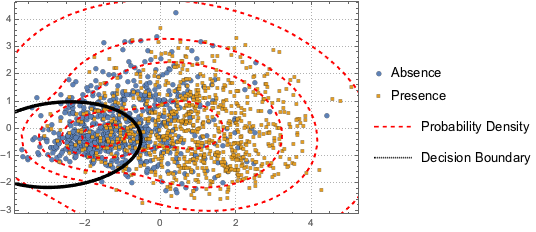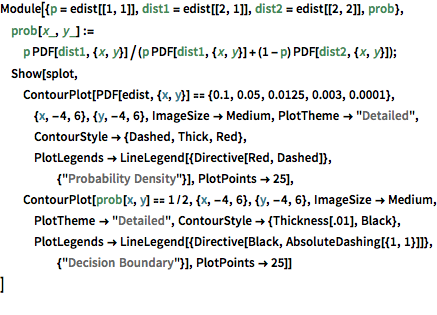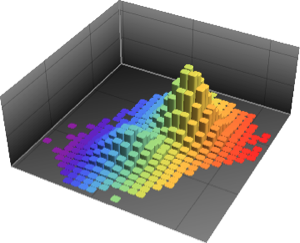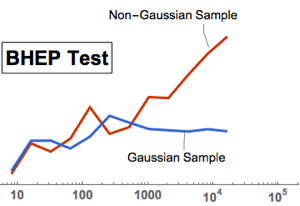心脏疾病数据分析
数据分析是基于从原始数据源提取的信息的提取、演示、建模过程. 本范例展示了用 Wolfram 语言进行数据分析的一个工作流程. 这里使用的数据集来自 UCI Machine Learning Repository,包含了 1,541 名患者的心脏疾病诊断数据.
导入心脏疾病诊断数据,并对其解析使得每行与不同患者相对应,并且每列对应不同属性.
In[1]:=

rawdata =
Import["https://archive.ics.uci.edu/ml/machine-learning-databases/\
heart-disease/new.data", "Text"];
data = StringSplit[rawdata, LetterCharacter ..];
data = Table[
ToExpression[StringSplit[dat, (" " | "\n") ..]], {dat, data}];将相关属性提取至 "labels" 和 "features". "labels" 中存储的值为 0 和 1,分别对应心脏疾病的 presence(存在)和 absence(不存在).
In[2]:=
labels = Unitize[data[[All, 58]]];
features =
data[[All, {3, 4, 9, 10, 12, 16, 19, 32, 38, 40, 41, 44, 51}]];In[3]:=
Take[labels, 10]Out[3]=
对于每位患者,特征向量是数字值的列表. 但是,数据并不完整且缺失域储存为  .
.
In[4]:=
features[[-3]]Out[4]=
用对应属性中可用数据的平均值来置换缺失的值,然后可视化不同属性的关联.
In[5]:=

features = Transpose[Table[
N[attribute /. {-9 -> Mean[N[DeleteCases[attribute, -9]]]}]
, {attribute, Transpose[features]}]];
cormat = Correlation[features];显示完整的 Wolfram 语言输入
Out[6]=
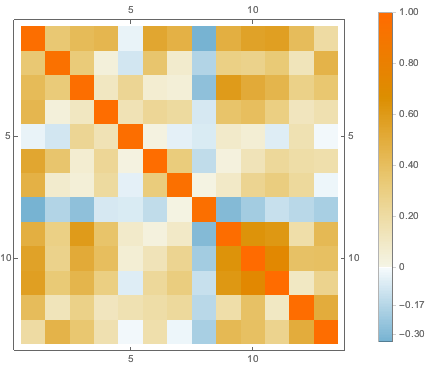
为可视化数据分布, 用 PCA 操作提取前两个分量,然后将投影数据绘在散点图上.
In[7]:=
pcs2 = Take[PrincipalComponents[features, Method -> "Correlation"],
All, 2];显示完整的 Wolfram 语言输入
Out[8]=
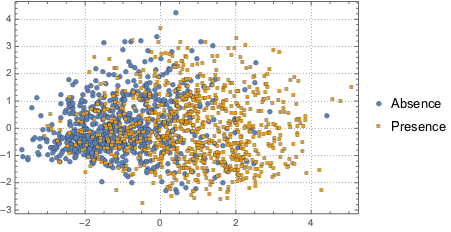
为区分两个分类,用一个二分量高斯混合模型拟合投影数据.
In[9]:=

edist = EstimatedDistribution[pcs2,
MixtureDistribution[{p1,
p2}, {BinormalDistribution[{m11, m12}, {s11, s12}, r1],
BinormalDistribution[{m21, m22}, {s21, s22}, r2]}]];根据混合模型, 绘制混合模型的决策边界(黑色曲线)和概率密度等值线(红色曲线)并与散点绘图一同显示. 高斯混合的第一个分量在决策边界中的概率更高.
显示完整的 Wolfram 语言输入
Out[10]=
